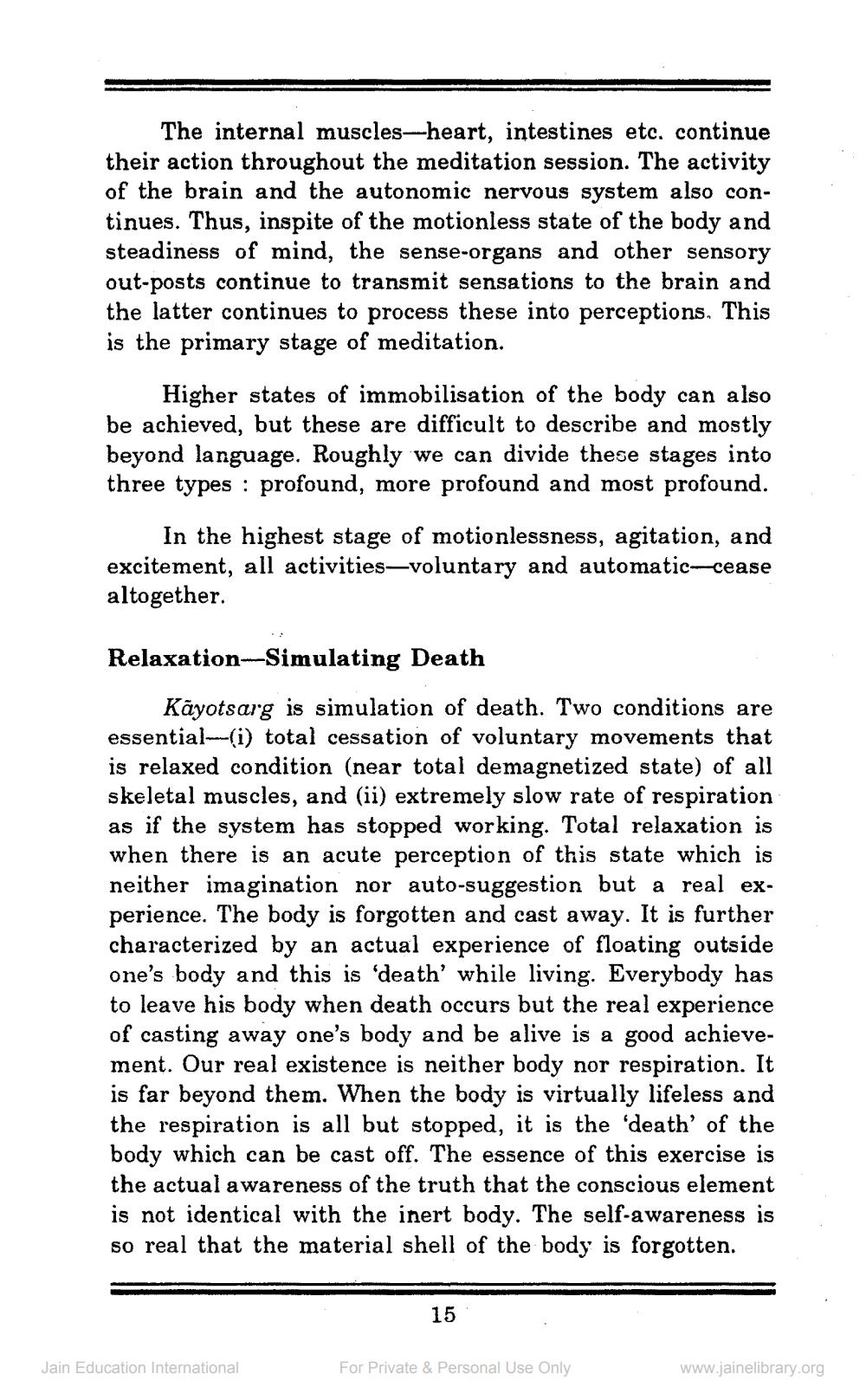________________
The internal muscles-heart, intestines etc. continue their action throughout the meditation session. The activity of the brain and the autonomic nervous system also continues. Thus, inspite of the motionless state of the body and steadiness of mind, the sense-organs and other sensory out-posts continue to transmit sensations to the brain and the latter continues to process these into perceptions. This is the primary stage of meditation.
Higher states of immobilisation of the body can also be achieved, but these are difficult to describe and mostly beyond language. Roughly we can divide these stages into three types : profound, more profound and most profound.
In the highest stage of motionlessness, agitation, and excitement, all activities—voluntary and automatic-cease altogether.
Relaxation--Simulating Death
Kāyotsarg is simulation of death. Two conditions are essential(i) total cessation of voluntary movements that is relaxed condition (near total demagnetized state) of all skeletal muscles, and (ii) extremely slow rate of respiration as if the system has stopped working. Total relaxation is when there is an acute perception of this state which is neither imagination nor auto-suggestion but a real experience. The body is forgotten and cast away. It is further characterized by an actual experience of floating outside one's body and this is 'death' while living. Everybody has to leave his body when death occurs but the real experience of casting away one's body and be alive is a good achievement. Our real existence is neither body nor respiration. It is far beyond them. When the body is virtually lifeless and the respiration is all but stopped, it is the death of the body which can be cast off. The essence of this exercise is the actual awareness of the truth that the conscious element is not identical with the inert body. The self-awareness is so real that the material shell of the body is forgotten.
15
Jain Education International
For Private & Personal Use Only
www.jainelibrary.org




